COVID-19: TCTMD’s Daily Dispatch for March Week 4
We’re curating a list of COVID-19 research and other useful content, and updating it daily.

TCTMD reporter Todd Neale is keeping up on breaking news and peer-reviewed research related to COVID-19 and will update daily. If you have something to share, tell us. All of our COVID-19 coverage can be found on our COVID-19 Hub.
March 26, 2021
The European Medicines Agency (EMA) announced new manufacturing sites that will help increase manufacturing capacity and supply in the European Union. Sites have been approved for production of both the Oxford/AstraZeneca vaccine (in Leiden, the Netherlands) and for the BioNTech/Pfizer vaccine (in Marburg, Germany). An additional Moderna vaccine manufacturing site, in Visp, Switzerland, was announced last week. Other recommendations allow for transportation and storage of the BioNTech/Pfizer product in standard pharmaceutical freezers for a “one-off” period of 2 weeks to help facilitate rollout.
 The Pfizer and Moderna vaccines are safe for pregnant and lactating women, producing antibody titers similar to those in non-pregnant women reports a small study published in the American Journal of Obstetrics and Gynecology. Immune transfer was also seen via placenta and breastmilk, authors say.
The Pfizer and Moderna vaccines are safe for pregnant and lactating women, producing antibody titers similar to those in non-pregnant women reports a small study published in the American Journal of Obstetrics and Gynecology. Immune transfer was also seen via placenta and breastmilk, authors say.
The daily case count in Canada has increased more than 30 percent over the last 2 weeks, as have daily deaths and disease severity indicators, the Globe and Mail reports. “Data released Friday by the Public Health Agency of Canada shows that while the number of cases have declined in Canadians aged 80 and older, incidence rates are highest among young adults aged 20 to 39.”
Kenya is the latest country to announce new lockdowns to stem the third wave of infections. “Kenya’s President Uhuru Kenyatta restricted travel in the capital Nairobi and four surrounding counties on Friday as COVID-19 infections hit record levels in East Africa’s richest economy,” Reuters reports. After making the announcement, the Kenyan president was vaccinated on live television along with his wife, the acting chief justice, and other members of the cabinet.
A surge in infections in the Eastern Mediterranean is not being matched by vaccine rollout, a research letter in the Lancet warns. Cases in the region continued to tick upwards as case counts fell more globally back in February. Only three countries in the region, Bahrain, Morocco, and the United Arab Emirates, had reported more than 10 doses per 100 inhabitants as of March 2, authors note.
Writing in Virus Evolution, German researchers address a question that is increasingly being asked: how regularly will COVID-19 vaccines need to be adapted? In their modelling, which compared long-term evolutionary dynamics of seasonal, ubiquitous human coronaviruses to a human influenza A virus subtype, they conclude that unlike in flu viruses, variant evolution with SARS-CoV-2 may in time not require annual jabs. “We expect that SARS-CoV-2 will start to change more slowly once infections start to die down—meaning once a large proportion of the global population has developed immunity either as a result of infection or through vaccination,” lead author Jan Felix Drexler, MD, is quoted in a press release. “We expect therefore that COVID-19 vaccines will need to be monitored regularly throughout the pandemic and updated where necessary. Once the situation has stabilized, vaccines are likely to remain effective for longer."
\ Middle-aged women who recover from an acute COVID-19 infection requiring hospitalization appear to be at greater risk of debilitating long-term symptoms including fatigue, breathlessness, muscle pain, anxiety, depression, and “brain fog,” a news report, based on two preprint studies, explains in the BMJ. In one study, long-COVID symptoms were more common in women than men age 40-60, particularly those who were white, had two or more comorbidities at admission, and who received invasive ventilation while in the hospital. In a second, smaller study, women under 50 were five times less likely than men of the same age to report feeling “recovered” and more likely to report breathlessness and fatigue.
Middle-aged women who recover from an acute COVID-19 infection requiring hospitalization appear to be at greater risk of debilitating long-term symptoms including fatigue, breathlessness, muscle pain, anxiety, depression, and “brain fog,” a news report, based on two preprint studies, explains in the BMJ. In one study, long-COVID symptoms were more common in women than men age 40-60, particularly those who were white, had two or more comorbidities at admission, and who received invasive ventilation while in the hospital. In a second, smaller study, women under 50 were five times less likely than men of the same age to report feeling “recovered” and more likely to report breathlessness and fatigue.
Also writing in the BMJ, Gareth Iacobucci reports that in 2020 the United Kingdom had a higher rate of excess deaths among people under age 65 than almost every other country in Europe, reaching a level 7.7% higher than its 5-year average. Only Bulgaria saw a greater increase in cumulative excess mortality, reaching 12.3% over the 5-year average. Quoted in the article, Kevin McConway, PhD, notes: “The difference in relative death rates by age could be because mortality directly caused by COVID-19 in younger people was relatively higher here than elsewhere in Europe, or it could be because excess deaths from non-COVID causes were relatively higher here than elsewhere, or some combination of the two.”
Writing in JAMA Psychiatry, Maura Boldrini, MD, PhD, and colleagues review the many ways documented to date that COVID-19 appears to affect the brain. Not only will “mitigating” long-term cognitive, emotional, and behavioral effects of COVID-19 help to decrease disease burden, they argue, but also “COVID-19 neuropathology may serve as a model for deciphering neurodegenerative processes related to neuroinflammation in other brain diseases,” potentially leading to new treatment strategies.
 Between August 2020 and February 2021 the percentage of US adults reporting recent symptoms of anxiety or depression increased from 36.4% to 41.5%, according to new research in Morbidity and Mortality Weekly Report. The proportion of adults citing an unmet mental health care need rose from 9.2% to 11.7%. Increases were particularly pronounced among adults aged 18-29 with less than a high school education.
Between August 2020 and February 2021 the percentage of US adults reporting recent symptoms of anxiety or depression increased from 36.4% to 41.5%, according to new research in Morbidity and Mortality Weekly Report. The proportion of adults citing an unmet mental health care need rose from 9.2% to 11.7%. Increases were particularly pronounced among adults aged 18-29 with less than a high school education.
A BBC feature and radio interview tells the extraordinary story of how the UK RECOVERY trial, credited with getting fast answers on which drugs work and which don’t against COVID-19, got up and running in under 2 weeks. It began with a conversation between on the Number 18 bus: “The two bus passengers were Prof. Martin Landray, a doctor and designer of large-scale drug trials, and Sir Jeremy Farrar, director of the Wellcome Trust, one of the world's biggest funders of medical research—and one of the funders of RECOVERY.”
TCTMD managing editor Shelley Wood contributed today’s Dispatch.
March 25, 2021
Interim results from the US phase III AstraZeneca vaccine trial, which prompted an “expression of concern” from the Food and Drug Administration (FDA) earlier this week, have been confirmed in the primary analysis, the company reported today. In the trial of more than 30,000 subjects, the vaccine was 100% effective in preventing severe or critical disease and hospitalization and 76% effective in preventing symptomatic COVID-19 (down from 79% in the interim report). It was 85% effective in preventing symptomatic disease in people age 65 and older (up from 80% in the interim report). No safety concerns were identified.
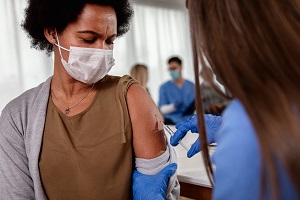 The European Medicines Agency (EMA)’s Pharmacovigilance Risk Assessment Committee (PRAC) has released an update on its evaluation of blood clots and low platelet counts with the Oxford/AstraZeneca vaccine, reiterating its stance that the benefits outweigh the risks. “The committee confirmed that the vaccine is not associated with an increase in the overall risk of blood clots and that the benefits of the vaccine in combating the still widespread threat of COVID-19 continue to outweigh the risk of side effects,” a statement reads. PRAC has amended the product information and direct-to-doctor information on the EMA website and is continuing to assess reported cases. An ad hoc expert group is convening March 29 and will issue updated recommendation in the first week or two of April.
The European Medicines Agency (EMA)’s Pharmacovigilance Risk Assessment Committee (PRAC) has released an update on its evaluation of blood clots and low platelet counts with the Oxford/AstraZeneca vaccine, reiterating its stance that the benefits outweigh the risks. “The committee confirmed that the vaccine is not associated with an increase in the overall risk of blood clots and that the benefits of the vaccine in combating the still widespread threat of COVID-19 continue to outweigh the risk of side effects,” a statement reads. PRAC has amended the product information and direct-to-doctor information on the EMA website and is continuing to assess reported cases. An ad hoc expert group is convening March 29 and will issue updated recommendation in the first week or two of April.
Most of the European countries that suspended their use of the Oxford/AstraZeneca vaccine have resumed. Denmark, one of the first countries to press pause on vaccinations, announced today that it was extending its suspension for another 3 weeks, Reuters reports. Two local cases of “unusual clotting” are still being analyzed there, in addition to cases elsewhere in Europe.
AstraZeneca has also weighed in on yesterday’s news that a stockpile of its vaccine had been uncovered in Italy, raising concerns that doses were being shipped out of Europe rather than helping to curb domestic spread within the bloc. “It is incorrect to describe this as a stockpile,” the company insists. No exports are currently planned other than to COVAX countries and half of the doses found were actually manufactured abroad and only brought the Anagi plant to be put in vials, the statement explains. “There are 13 million doses of vaccine waiting for quality control release to be dispatched to COVAX as part of the company’s commitment to supply millions of doses to low-income countries [and] another 16 million doses are waiting for quality control to be dispatched to Europe.”
A sweeping review of almost 3 million COVID-19 cases and 65,000 deaths in Africa between February 14 and December 31, 2020, confirms that the continent’s second wave of infections was worse than its first. The surge of cases in the second wave was likely due to the emergence of more infectious variants, but also a drop in adherence to public health and social measures, investigators write in the Lancet.
An updated Cochrane review indicates that rapid antigen tests for COVID-19 are better at correctly pinpointing cases of COVID-19 in symptomatic cases than in those who are asymptomatic. “There are large differences in the accuracy of different brands of test, with very few meeting the World Health Organization (WHO) minimum acceptable performance standards,” investigators conclude after reviewing 64 studies. In 1,000 people with symptoms 50 of whom had COVID-19, their estimates imply that about 40 people would be correctly identified as having COVID-19 by rapid tests, six to 12 cases of COVID-19 would be missed, and five to nine positive test results would turn out to be false positives.
 An estimated 60% of US universities and colleges canceled or adjusted spring breaks in the hopes of stemming a tide of students returning to class after converging on hot spots like Miami beach, USA Today reports, citing a survey by the College Crisis Initiative. One-quarter of schools surveyed opted to cancel the break altogether. How to police or punish students that flout rules on returning to class is an open question, the article notes.
An estimated 60% of US universities and colleges canceled or adjusted spring breaks in the hopes of stemming a tide of students returning to class after converging on hot spots like Miami beach, USA Today reports, citing a survey by the College Crisis Initiative. One-quarter of schools surveyed opted to cancel the break altogether. How to police or punish students that flout rules on returning to class is an open question, the article notes.
The Washington Post explores how the US spring break in South Beach “spun out of control.”
A perspective in the New England Journal of Medicine offers practical guidance for physicians to combat anti-Asian racism, attributed in large part to the “blame placed on China for causing the COVID-19 pandemic, given that the virus was initially discovered in Wuhan.”
Also in NEJM, an audio interview with historian Allan Brandt explores the impact of past pandemics on human society and what lessons they offer for the current SARS-CoV-2 pandemic.
Riders are abandoning public transit out of concerns about infection, or simply because they’re not leaving the house as regularly. “That’s a disaster for the world’s ability to address that other global crisis: climate change,” the New York Times reports. “Public transit offers a relatively simple way for cities to lower their greenhouse gas emissions, not to mention a way to improve air quality, noise, and congestion.
 A “Smell Disturbance Clinic” that opened earlier this month in Colorado has started screening children who lost their sense of smell following COVID-19 infection, with the aim of treating their anosmia with a kit containing essential oils that they’ll sniff twice a day, KHN.org reports. A similar “smell training” service, focused on kids, will open soon in Seattle.
A “Smell Disturbance Clinic” that opened earlier this month in Colorado has started screening children who lost their sense of smell following COVID-19 infection, with the aim of treating their anosmia with a kit containing essential oils that they’ll sniff twice a day, KHN.org reports. A similar “smell training” service, focused on kids, will open soon in Seattle.
TCTMD managing editor Shelley Wood contributed today’s Dispatch.
March 24, 2021
 The European Union (EU) has proposed COVID-19 vaccine export controls that would require any outgoing shipment to be assessed based on the destination country’s rate of vaccinations and vaccine exports, the BBC reports. The proposal, coming after accusations that UK/Sweden-based drugmaker AstraZeneca has failed to honor its vaccine commitments, will go before EU leaders tomorrow.
The European Union (EU) has proposed COVID-19 vaccine export controls that would require any outgoing shipment to be assessed based on the destination country’s rate of vaccinations and vaccine exports, the BBC reports. The proposal, coming after accusations that UK/Sweden-based drugmaker AstraZeneca has failed to honor its vaccine commitments, will go before EU leaders tomorrow.
Compounding those concerns, 29 million doses of the Oxford/AstraZeneca vaccine were “found languishing in a facility in Italy,” the New York Times reports. “The presence of so many doses raised suspicions that the pharmaceutical company was trying to find a way to export them to Britain or elsewhere, something the bloc has demanded that AstraZeneca stop doing until the company fulfills its promises for deliveries.”
India has also put a temporary hold on all major exports of the AstraZeneca vaccine made by the Serum Institute of India in order to meet domestic demand as infections in India spike, Reuters reports.
Hong Kong today suspended use of the Pfizer vaccine after its Chinese distributor informed officials that one batch had defective lids on the vaccine bottles. The lids were found on vaccines from batch number 210102, the Associated Press reports, adding that another batch of vaccines, 210104, also will be not be administered.
 A strict “Easter lockdown” in Germany has been scaled back less than 36 hours after it was announced, following a backlash by opposition politicians and the public, the New York Times reports. Chancellor Angela Merkel has called the announcement “a mistake” made with the best intentions.
A strict “Easter lockdown” in Germany has been scaled back less than 36 hours after it was announced, following a backlash by opposition politicians and the public, the New York Times reports. Chancellor Angela Merkel has called the announcement “a mistake” made with the best intentions.
National Institute of Allergy and Infectious Diseases (NIAID) Director Anthony Fauci, MD, said today that AstraZeneca will likely be releasing a new, “modified” statement about the US clinical trial results of its COVID-19 vaccine, one day after the trial’s data and safety monitoring board expressed concern that the numbers were outdated, Reuters reports.
In a statement yesterday responding to NIAID, the company said it had conducted a preliminary assessment of the primary analysis and found it was consistent with the interim analysis, but is promising an update within 48 hours.
A “news explainer” in Nature reviews what’s known and unknown about the Oxford/AstraZeneca vaccine and addresses why concerns still linger.
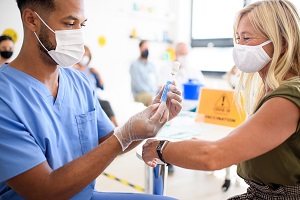 Research letters published today in the New England Journal of Medicine offer a snapshot of vaccine efficacy among health workers. One, reporting on the vaccine program at the UT Southwestern Medical Center in Dallas, TX, pointed to a 90% drop in the number of employees needing to isolate or quarantine following exposure or infection. A second letter, focused on health workers at Hadassah Hebrew University Medical Center in Jerusalem, documented dramatic decrease in numbers of infections from approximately 10% prior to the first vaccine dose to 0.6% at 5 weeks after first vaccine dose, even as the more-infectious B.1.1.7 variant began to dominate. A third analysis, this one looking at healthcare workers testing positive after vaccination at two hospitals in California, found that a positive PCR test following a first or second dose was in the range of 1% with either the Moderna or Pfizer vaccine. While these rates are higher than those reported in the trials, most infections occurred within the first 2 weeks and may be due to high exposure to COVID-19. “These data underscore the critical importance of continued public health mitigation measures,” the authors write, “until heard immunity is reached.”
Research letters published today in the New England Journal of Medicine offer a snapshot of vaccine efficacy among health workers. One, reporting on the vaccine program at the UT Southwestern Medical Center in Dallas, TX, pointed to a 90% drop in the number of employees needing to isolate or quarantine following exposure or infection. A second letter, focused on health workers at Hadassah Hebrew University Medical Center in Jerusalem, documented dramatic decrease in numbers of infections from approximately 10% prior to the first vaccine dose to 0.6% at 5 weeks after first vaccine dose, even as the more-infectious B.1.1.7 variant began to dominate. A third analysis, this one looking at healthcare workers testing positive after vaccination at two hospitals in California, found that a positive PCR test following a first or second dose was in the range of 1% with either the Moderna or Pfizer vaccine. While these rates are higher than those reported in the trials, most infections occurred within the first 2 weeks and may be due to high exposure to COVID-19. “These data underscore the critical importance of continued public health mitigation measures,” the authors write, “until heard immunity is reached.”
The antitumor necrosis factor (anti-TNF) drug infliximab appears to attenuate the body’s immune response to SARS-CoV-2, researchers report in Gut. “Serological testing and virus surveillance should be considered to detect suboptimal vaccine responses, persistent infection, and viral evolution to inform public health policy.”
Once touted as a miracle cure in the United States by former Trump administration, hopes for convalescent plasma have gone dark following a spate of negative studies. But don’t count it out altogether, an article in KHN.org proposes. While some experts say it’s time to move on, others “note that larger studies employing more-calibrated doses of convalescent plasma and more-targeted groups of patients, during a set window in their illness, have met the standards for moving forward and may show promise.”
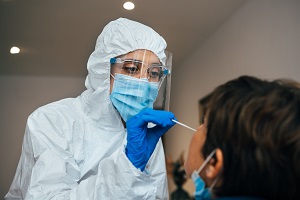 The population-wide rapid antigen testing that was a cornerstone of Slovenia’s pandemic battle in late 2020 likely led to a 70% decrease in prevalence as compared with an earlier period of unmitigated growth. “Modelling indicated that this decrease could not be explained solely by infection control measures, but required the additional impact of isolation and quarantine of household members of those testing positive,” researchers write in Science.
The population-wide rapid antigen testing that was a cornerstone of Slovenia’s pandemic battle in late 2020 likely led to a 70% decrease in prevalence as compared with an earlier period of unmitigated growth. “Modelling indicated that this decrease could not be explained solely by infection control measures, but required the additional impact of isolation and quarantine of household members of those testing positive,” researchers write in Science.
Jennifer Abbasi, writing in JAMA, details how the United States failed to prioritize SARS-CoV-2 variant surveillance using genome sequencing, leading to a piecemeal approach that has hampered efforts to understand the impact of different strains, limit transmission, and plan accordingly. “Despite leading the world in infections, the nation ranked 43rd globally for its percentage of cases sequenced,” Abbasi writes. “At the time, the US had sequenced about 50 000 of its more than 18 million cases—just 0.3%. Britain, another high-income nation with a large outbreak, had sequenced almost 160,000 samples, 7.4% of its 2.1 million cases.”
Yesterday marked a full year that we’ve been producing the Daily Dispatch almost every single weekday! The vast majority have been researched and written by TCTMD’s Todd Neale, now taking a well-earned break, and edited by Shelley Wood.

TCTMD managing editor Shelley Wood contributed today’s Dispatch.
March 23, 2021
 Yesterday’s headline news was that AstraZeneca’s 30,000-patient US vaccine trial had delivered impressive safety and efficacy: late Monday, however, the company’s data and safety monitoring board (DSMB) notified the US National Institute of Allergy and Infectious Diseases (NIAID) that they saw a problem. “The DSMB expressed concern that AstraZeneca may have included outdated information from that trial, which may have provided an incomplete view of the efficacy data,” a NIAID statement reads. “We urge the company to work with the DSMB to review the efficacy data and ensure the most accurate, up-to-date efficacy data be made public as quickly as possible.”
Yesterday’s headline news was that AstraZeneca’s 30,000-patient US vaccine trial had delivered impressive safety and efficacy: late Monday, however, the company’s data and safety monitoring board (DSMB) notified the US National Institute of Allergy and Infectious Diseases (NIAID) that they saw a problem. “The DSMB expressed concern that AstraZeneca may have included outdated information from that trial, which may have provided an incomplete view of the efficacy data,” a NIAID statement reads. “We urge the company to work with the DSMB to review the efficacy data and ensure the most accurate, up-to-date efficacy data be made public as quickly as possible.”
“The last thing this vaccine needs is more concern when we kind of thought we were at that point now where we’d put to bed all the other concerns,” Paul Griffin, MBBS, is quoted in a Bloomberg article recapping the Oxford/AstraZeneca vaccine’s checkered history.
In a phase III trial, Regeneron’s antibody cocktail REGEN-COV, combining casirivimab with imdevimab, reduced hospitalization or death by 70% in nonhospitalized COVID-19 patients, the company announced today. The drug—which was tested in three different doses, all of which showed similar efficacy across all endpoints—also significantly shortened duration of symptoms by 4 days. A parallel phase II trial showed “significant and comparable viral reductions for all REGEN-COV doses tested, including as low as 300 mg,” a press release notes.
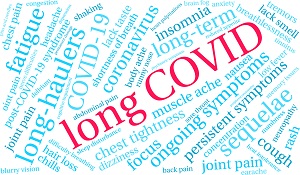 Another study probing the lasting symptoms in so-called long-haulers details the neurologic manifestations including “brain fog” (81%), headache (68%), numbness/tingling (60%), dysgeusia (59%), anosmia (55%), and myalgias (55%). The prospective study, published in the Annals of Clinical and Translational Neurology, followed the first 100 patients presenting to Northwestern University’s Neuro-COVID-19 clinic, 50 of whom were SARS-CoV-2-postive. Lasting symptoms among positive patients were compared against those who tested negative.
Another study probing the lasting symptoms in so-called long-haulers details the neurologic manifestations including “brain fog” (81%), headache (68%), numbness/tingling (60%), dysgeusia (59%), anosmia (55%), and myalgias (55%). The prospective study, published in the Annals of Clinical and Translational Neurology, followed the first 100 patients presenting to Northwestern University’s Neuro-COVID-19 clinic, 50 of whom were SARS-CoV-2-postive. Lasting symptoms among positive patients were compared against those who tested negative.
Germany is heading into another strict lockdown that amounts to an “extended Easter break” the New York Times reports. Church services will be online only, groups are restricted to a max of five adults, and almost all stores will be shuttered. The more-contagious UK variant is being blamed for the spike in infections. “We are in a very, very serious situation,” German Chancellor Angela Merkel told a news conference.
In the United Arab Emirates, some people are rolling up their sleeves for a third shot of the Chinese Sinopharm vaccine after demonstrating insufficient levels of antibodies following the standard two-dose regimen, the New York Times says. The disclosure could “add to questions about the overall efficacy of the Sinopharm vaccine,” which is being used in at least six countries, the Times suggests.
Russian President Vladimir V. Putin will finally be getting vaccinated today, putting an end to months of speculation as to why he was holding off, given that home-grown SPUTNIK V vaccine was approved in Russia last August. The Kremlin isn’t saying which of the three Russian-made vaccines he’ll be getting, CNBC reports.

Twenty million doses of the Johnson & Johnson vaccination anticipated for the end of March may not be ready for use until mid to late April, “potentially complicating preparations for states,” Politico reports. The single-dose vaccine was cleared for emergency use at the end of February and is a key part of the Biden administration’s plan to offer vaccination to any American who wants one by the end of May 2021. Part of the holdup relates to the fact that the vaccine is being sent from Europe to two “fill and finish” facilities, but one of these companies was not included in J&J’s initial emergency use authorization, so doses sent there “sat unused.”
A review paper in Nature Reviews Microbiology sums up what’s known and unknown about the transmissibility and transmission of respiratory viruses—that is, how easily they spread, and by what mechanisms. “Discussion on the particle size threshold between droplets and aerosols and the importance of aerosol transmission for SARS-CoV-2 and influenza virus is ongoing,” writes Nancy H.L. Leung, PhD.
Healthcare worker burnout amid the COVID-19 pandemic jeopardizes the health of billions of people around the world, warns an editorial in the Lancet eClinical Medicine. A shortfall of 18 million healthcare workers is already predicted by 2030, costing potentially $47 trillion by the end of the decade. The “COVID-19 pandemic and lingering long-term apathy of burned-out healthcare workers toward patient care will accelerate these trends,” writes Dharam Kaushik, MD. “What's at stake here is public health, globally.”

TCTMD managing editor Shelley Wood contributed today’s Dispatch.
March 22, 2021
A large, phase III trial of the Oxford/AstraZeneca vaccine conducted in the United States indicates that the injection is 79% effective at preventing symptomatic COVID-19 and 100% effective at preventing severe or critical disease and hospitalization, the company announced today. Results were comparable across different ethnic groups and different ages, with 80% efficacy in people aged 65 and older. Crucially, given concerns that led to a pause on the vaccine’s use in many countries last week, no increased risk of thrombosis or associated events were seen among the more than 21,500 subjects who received at least one dose.
The worldwide vaccination tracker compiled by Our World in Data indicates that tiny Seychelles is leading the world, with 65% of its 98,000 citizens receiving at least one dose, followed by Israel with 58%. Forty-two percent of people in the United Kingdom have received at least one dose, 30% in Chile, and 25% in the United States and Monaco, respectively. In Europe, including countries that last week paused their use of the AstraZeneca vaccine, inoculation rates are in the range of 9% for Italy, France, Spain, and Germany. US neighbors Canada and Mexico, which both received a vaccine “loan” from the Biden administration last week of the stockpiled non-FDA-approved AstraZeneca vaccine, have reached vaccination levels of 11% and 4.4%, respectively.
 The United States is a confusing patchwork of vaccine eligibility rules that depend on what state you’re in, Phil Galewitz reports on KHN.org. Smokers are heading to the front of the queue in North Carolina, whereas in California and 30 other states people are only eligible if they are 65 years or older or have certain health conditions. In Florida, a doctor’s note will get you a vaccine if you are under 50 with an underlying health condition. “There is no logical rationale for the system we have,” Harvard professor Graham Allison, PhD, is quoted in the story. “We have a crazy quilt system.”
The United States is a confusing patchwork of vaccine eligibility rules that depend on what state you’re in, Phil Galewitz reports on KHN.org. Smokers are heading to the front of the queue in North Carolina, whereas in California and 30 other states people are only eligible if they are 65 years or older or have certain health conditions. In Florida, a doctor’s note will get you a vaccine if you are under 50 with an underlying health condition. “There is no logical rationale for the system we have,” Harvard professor Graham Allison, PhD, is quoted in the story. “We have a crazy quilt system.”
Heart palpitations, chest pain, and thromboembolism are among the lasting symptoms seen in 12 weeks to 6 months following infection, according to a comprehensive review of postacute COVID-19, “a syndrome characterized by persistent symptoms and/or delayed or long-term complications beyond 4 weeks,” researchers write in Nature Medicine today. In addition to summarizing the symptoms and their pathophysiology, Ani Nalbandian, MD, and colleagues also propose a framework for identifying patients at high risk for postacute COVID-19 and management via dedicated clinics.
Obesity is a key predictor of hospital admission and longer ICU stays, but obese patients are no more likely to die than patients with normal body mass index, a new study suggests. The analysis, presented at the virtual ENDO 2021 meeting, looked at the 3,268 adult patients hospitalized with COVID-19 at five hospitals in the Yale New Haven Health System between March and November 2020. In all, 43% of hospitalized patients were obese, 15.8% died, and 24.2% required ICU-level care, with obese patients being 23% more likely than normal BMI patients to end up in the ICU.
In another ENDO 2021 presentation, investigators showed that children with poorly controlled type 1 diabetes have a 10-times higher risk of COVID-19 complications and death than those with well-controlled diabetes.
 Growing evidence linking obesity and severe COVID-19 comes amid parallel research suggesting that pandemic lockdowns may be worsening the obesity epidemic. A research letter in in JAMA Network Open today describes the results of serial weight measurements among 269 subjects from 37 US states and Washington, DC, during the first phase of COVID-19, February 1 to June 1, 2020, including the shelter-in-place orders of March 19 to April 6. Following the lockdown, investigators report, subjects gained weight at a rate of approximately one and a half pounds per month. “Though this may not appear clinically important, prolonged effects as have occurred with the pandemic might lead to substantial weight gain,” they caution.
Growing evidence linking obesity and severe COVID-19 comes amid parallel research suggesting that pandemic lockdowns may be worsening the obesity epidemic. A research letter in in JAMA Network Open today describes the results of serial weight measurements among 269 subjects from 37 US states and Washington, DC, during the first phase of COVID-19, February 1 to June 1, 2020, including the shelter-in-place orders of March 19 to April 6. Following the lockdown, investigators report, subjects gained weight at a rate of approximately one and a half pounds per month. “Though this may not appear clinically important, prolonged effects as have occurred with the pandemic might lead to substantial weight gain,” they caution.
COVID-19 is “strongly associated” with hearing loss, according to research published in the International Journal of Audiology that pooled data from 24 studies published over the course of the pandemic. Prevalence of hearing loss was 7.6%, tinnitus was 14.8%, and vertigo was 7.2%. “While this is alarming, caution is required as it is unclear if changes to hearing are directly attributed to COVID-19 or to other factors, such as treatments to deliver urgent care,” senior investigator Kevin Munro, PhD, is quoted in a press release.
Antibody responses to SARS-CoV-2 appear to differ based on age, an analysis in JAMA Network Open suggests. While seroprevalence appeared similar in pediatric and adult patients, SARS-CoV-2 immunoglobulin G and total antibody levels, as well as neutralizing activity and avidity, exhibited negative correlations with age in patients aged 1 to 24 years. The findings hint that disease screening and management, as well as vaccine development, may need to be tailored to patient age.
 At least 21 different countries released postage stamps in 2020 commemorating the COVID-19 pandemic, with the entire series comprising 62 different stamps, researchers write in JAMA. The first COVID-19 stamp was issued by Iran, followed by China. Two nations’ stamps (from Morocco and Switzerland), as well as a series released by the United Nations, indicate with a plus sign that they are intended to raise additional monies designated for charity.
At least 21 different countries released postage stamps in 2020 commemorating the COVID-19 pandemic, with the entire series comprising 62 different stamps, researchers write in JAMA. The first COVID-19 stamp was issued by Iran, followed by China. Two nations’ stamps (from Morocco and Switzerland), as well as a series released by the United Nations, indicate with a plus sign that they are intended to raise additional monies designated for charity.
TCTMD managing editor Shelley Wood contributed today’s Dispatch.
Shelley Wood is the Editor-in-Chief of TCTMD and the Editorial Director at CRF. She did her undergraduate degree at McGill…
Read Full Bio

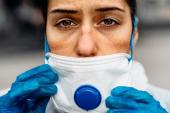

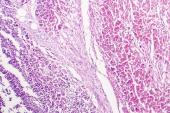
Comments